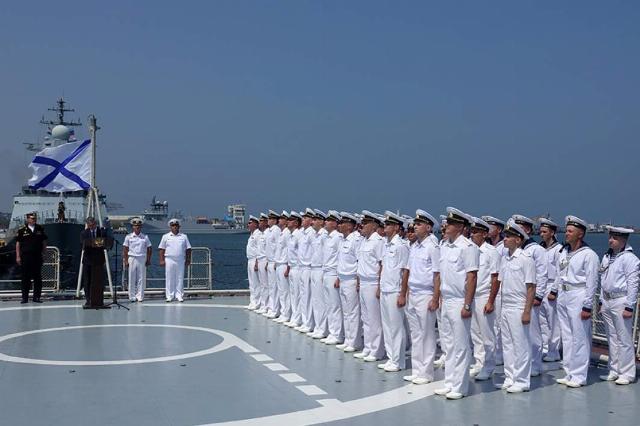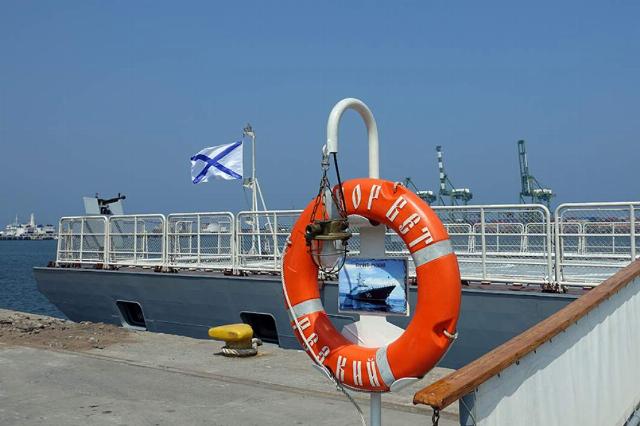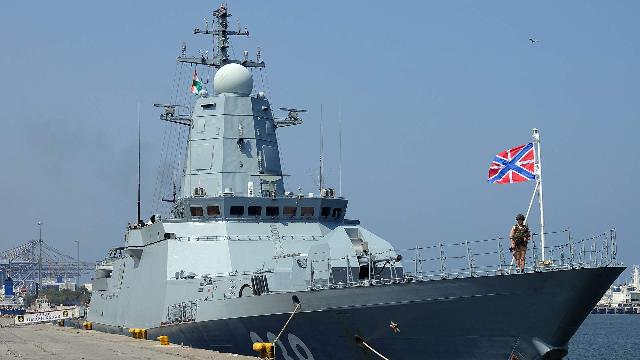A detachment of ships of the Pacific Fleet will take part in combat training events.
Joint naval maneuvers are important for Russian-Indian relations and lay the foundation for military-technical cooperation in the future, experts interviewed by Izvestia said. On Wednesday, a detachment of ships of the Pacific Fleet consisting of two corvettes and a tanker entered the port of Chennai to participate in the Indra Navy - 2025 exercise.
How will the Indra Navy 2025 exercise go?
A detachment of ships of the Pacific Fleet (Pacific Fleet) consisting of the corvettes "Sharp", "Hero of the Russian Federation Aldar Tsydenzhapov" and the medium sea tanker "Pechenga" made a call at the Chennai port of India. He arrived there to participate in the joint naval exercise Indra Navy - 2025.
A welcoming ceremony was held at the pier, which was attended by representatives of the Russian Embassy in India and representatives of the naval forces of the host country, the Russian Defense Ministry said.
During the first days, the parties will approve a plan for conducting the exercise, after which they will go to sea to work out tasks together.

Photo: TASS/Irina Polina
Image source: iz.ru
The exercise itself will consist of coastal and marine units. As part of the shore stage, the participants will develop and conduct staff training on joint actions of ships at sea. The sea stage will include joint maneuvering and other elements.
The Indra exercise has been held annually since 2003. The goals are stated to improve fleet cooperation, combat piracy and terrorism, conduct joint anti-submarine and anti-aircraft operations, and maintain security in the Indian Ocean.
In November last year, the Indian Ministry of Defense announced that Moscow and New Delhi had agreed to expand cooperation in the defense sector, including in the field of joint exercises. The ministry recalled that both countries have conducted numerous joint exercises on land, in the air and at sea. "Exercises such as Indra, Avia Indra and Indra Navy have served as important platforms for sharing best practices, improving joint operational tactical maneuvers and procedures, and deepening mutual understanding," the ministry said.
"We continue to maintain good friendly relations with India and its armed forces," Admiral Sergey Avakyants, ex—commander of the Pacific Fleet, told Izvestia. They are traditional and historical. And no matter what happens, no matter how the current situation and the balance of power in the world change, in no case should you ever give up old friends and allies, even for the sake of some short-term benefits. India has taken a positive position towards Russia in the face of sanctions pressure and attempts to isolate our country. Therefore, this can only be welcomed in every possible way.

Photo: TASS/Irina Polina
Image source: iz.ru
According to the admiral, the exercise plan will be typical.
— Issues of cooperation, assistance, and joint maneuvering will be worked out. Perhaps there will be a joint use of artillery weapons to destroy mines or small boats. In general, the exercise will be humanitarian and military in nature.
Indra is a traditional Russian-Indian exercise, they have been held for many years, and this is a typical format for interaction between the Russian and Indian fleets, Ilya Kramnik, a researcher at the IMEMO RAS Center for Strategic Planning Studies, told Izvestia.
"They are important given our interests in the region, where we try to interact with many countries,— he explained. — And besides, in the context of our long-standing bilateral relations. Joint Russian-Indian exercises are a well—established tradition. Given the active use of Russian-built ships and submarines by the Indian Navy, such maneuvers lay the foundation for future cooperation. And this allows us to count on the fact that we will remain an important strategic partner of India, including in the field of military-technical cooperation.
How is the Pacific Fleet's cruise going?
The maneuvers with the Indian Navy will be the latest in a series of exercises in which a detachment of ships of the Pacific Fleet takes part during its cruise through the South Seas. In February, he took part in events in Indonesia. The main events took place in the waters of the Badung Strait and on the island of Bali. The military of several dozen other countries also participated in the maneuvers, including the United States, China, Japan, France, India, Great Britain, and others. The main purpose of the exercises was to increase operational compatibility between the naval forces of different countries in the field of disaster relief and other humanitarian operations.

Photo: TASS/Irina Polina
Image source: iz.ru
In early March, the Maritime Security Belt 2025 exercise was held in the northern Indian Ocean with the participation of ships from Russia, Iran and China. The corvettes "Sharp", "Hero of the Russian Federation Aldar Tsydenzhapov" and the medium sea tanker "Pechenga" represented the Russian side.
The crews worked out the tasks of freeing captured vessels, search and rescue at sea, and also conducted artillery firing at sea and air targets.
The objectives were to ensure maritime security, counter piracy and terrorism at sea, as well as the protection of maritime communications.
Two warships and one integrated supply vessel from the PRC were involved in the exercise. Iran has deployed 16 warships and boats, two support vessels and two helicopters for maneuvers.
And last week, joint maneuvers of the Pacific Fleet detachment with the Pakistani Navy took place. They were conducted in the format of a PASSEX (passing exercise, passing training). This is a standard for naval maneuvers between two fleets, during which communication and interaction between them are checked in a military situation or when providing humanitarian assistance.
Roman Kretsul

